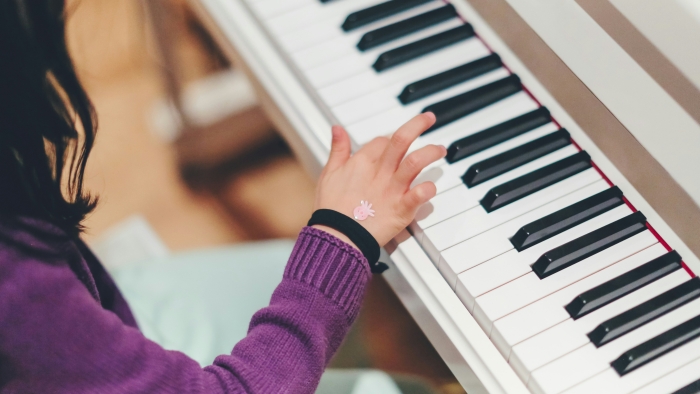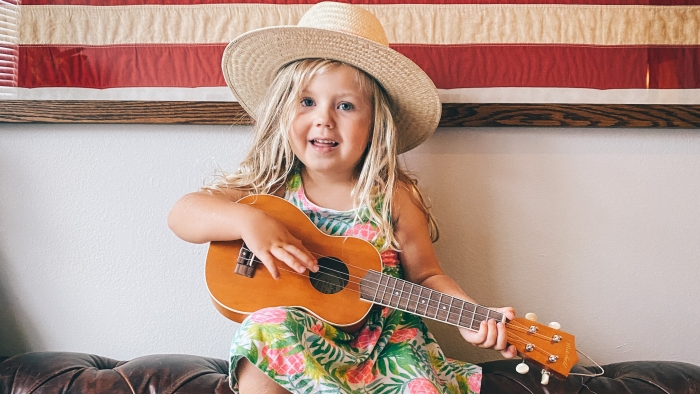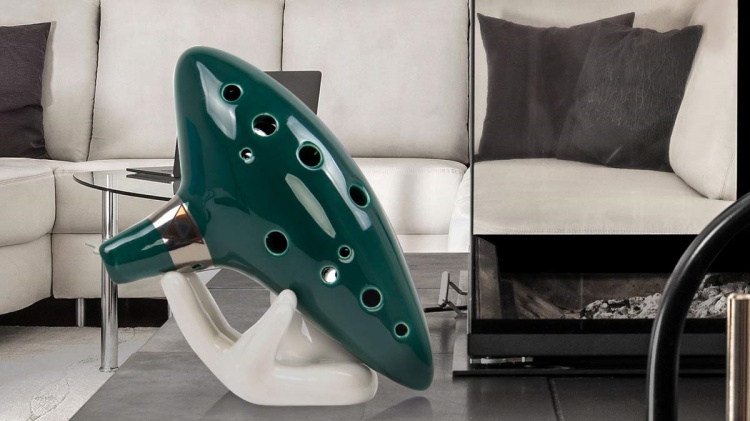
Exploring the Mystical Sounds: The World of the Ocarina
The ocarina is an ancient wind instrument known for its otherworldly and evocative sound. With a history spanning over 12,000 years across cultures worldwide, the

Involving musical instruments in a child’s educational journey is more than just a creative endeavor; it’s a strategic approach to enhancing their cognitive, emotional, and social development.
This comprehensive guide explores ten instruments that are ideal for 10-year-olds, highlighting how each instrument can contribute positively to various aspects of a child’s growth.
Music plays a crucial role in the cognitive development of children. When they engage with musical instruments, they’re not just playing tunes; they’re undergoing a brain workout.
Learning to read music improves literacy skills, while understanding rhythm and timing can significantly enhance mathematical abilities.
Playing an instrument requires a high level of concentration and focus, which is beneficial for their overall mental development.
Moreover, music education is closely linked to emotional intelligence. Children who play instruments often learn to express themselves more effectively.
They gain insights into their own emotions and develop empathy by interpreting the emotions in different musical pieces. This emotional awareness is vital for personal development and social interactions.
In exploring the wonderful world of music, selecting the right instrument for your child is crucial. Our guide below outlines a variety of instruments, each with unique characteristics and benefits, to help you find the perfect match for your young musician’s journey.
Characteristics: Compact, straightforward, and lightweight.
Advantages: The recorder is a perfect first instrument for children. It’s affordable, easy to learn, and teaches the basics of melody, rhythm, and breath control. Its simple finger placement and easy-to-follow melodies make it an ideal starting point for budding musicians.
Characteristics: Broad range, rich tones, and versatile.
Advantages: The piano is a foundational instrument for deep music theory understanding. It enhances fine motor skills, hand-eye coordination, and requires discipline and patience.

The piano’s wide range of notes and the ability to play chords and melodies simultaneously provide a comprehensive musical experience that aids in developing a deep appreciation for music.
Characteristics: Elegant string instrument with a clear, pure sound.
Advantages: The violin requires precision, improving hand-eye coordination and fine motor skills. It teaches about pitch and tone, enhancing auditory skills. The discipline required to master the violin fosters patience, dedication, and attention to detail.
Characteristics: Popular, versatile, and offers a range of styles.
Advantages: The guitar is excellent for self-expression and creativity. It’s suitable for various music genres, enhancing coordination and rhythm. The guitar is also a social instrument, often used in group settings, which helps develop teamwork and communication skills.
Characteristics: Beautiful woodwind instrument with a melodious sound.
Advantages: The flute improves lung capacity and breath control. It requires a good understanding of music reading and rhythm, contributing significantly to a child’s musical education.
Characteristics: Rhythmically focused and diverse.
Advantages: Percussion instruments like the African drum are excellent for teaching rhythm and coordination. They are engaging and fun, ideal for energetic children. Playing percussion can be a communal activity, encouraging teamwork and social interaction.
Characteristics: Portable, unique-sounding wind instrument.
Advantages: The harmonica is great for developing a sense of pitch and melody. It’s relatively easy to start playing simple tunes, providing a sense of accomplishment early in the learning process. The harmonica also enhances lung capacity and breath control.
Characteristics: Small, comfortable, and user-friendly string instrument.
Advantages: The ukulele is an excellent instrument for developing rhythm and coordination.

Its small size makes it suitable for younger children, and it’s a fun way to introduce them to string instruments. Learning to play the ukulele can be a stepping stone to more complex instruments like the guitar.
Characteristics: Digital, versatile, with various sound options.
Advantages: Keyboards offer a wide range of sounds and functionalities that can spark a child’s interest in music. They are an excellent tool for understanding music theory and composition. The ability to change sounds and rhythms can keep the learning process exciting and engaging.
Characteristics: Compact, easy to transport, and simple to play.
Advantages: The ocarina is an ancient wind instrument that is easy for beginners to pick up. It helps in developing a sense of musicality and rhythm. The ocarina’s unique sound can also pique a child’s interest in different cultures and musical styles.
Music education in early childhood lays the foundation for a lifetime of enjoyment and appreciation for music. It can significantly influence a child’s development in several ways:
Music education has been shown to improve children’s cognitive skills, including memory, attention, and language skills.
Learning an instrument can stimulate the brain in unique ways, enhancing neural connections. This stimulation can lead to improved general intelligence and academic performance, particularly in areas like mathematics and reading.
Playing an instrument can be a deeply personal and emotional experience. It allows children to express themselves in ways that words can not.
This expression can be a healthy outlet for emotions and can help in developing empathy and understanding.
Additionally, playing music in groups, such as in bands or orchestras, teaches children the importance of teamwork and collaboration. It also provides opportunities for socialization and making new friends.
Playing musical instruments also has physical benefits. Instruments like the drum or piano require coordination and dexterity, which can enhance motor skills.
Wind instruments like the flute or harmonica can improve breath control and lung capacity. String instruments like the violin and guitar develop fine motor skills and hand strength.
Starting a musical journey is an exciting time for both children and parents. Here are some tips to encourage and support your child’s musical interests:
Surround your child with music. Play various genres at home, attend live concerts, and encourage them to explore different types of music. This exposure can help them find their musical preferences and inspire them to learn an instrument.
Consider your child’s interests, physical size, and personality when choosing an instrument. Some children might prefer the melodic sounds of the piano, while others might be drawn to the rhythm of drums. It’s essential to select an instrument that your child is genuinely interested in to maintain their motivation.
Selecting an effective music teacher is crucial for enhancing your child’s musical education. Search for educators who are not only proficient in their musical abilities but also possess substantial experience in teaching children.
An ideal music teacher combines skill and knowledge with a patient, engaging approach, making the learning process enjoyable and captivating.
Such a teacher can inspire and nurture a deep, enduring passion for music in your child. Their ability to make lessons fun, interactive, and adaptable to your child’s learning style and pace is essential in fostering both skill development and a lifelong appreciation for the art of music.
Mastering a musical instrument requires dedication, time, and patience. It’s important to encourage your child to maintain a regular practice schedule, while also being empathetic to the difficulties they may encounter along the way.
Acknowledge and celebrate every bit of their progress and achievements, regardless of the scale.
This recognition of their efforts helps in keeping them motivated and enthusiastic about their musical journey. Understanding and support play a key role in nurturing their musical skills and passion.
Encourage your child to engage in musical activities with peers, such as joining a school band, participating in a local music ensemble, or simply playing instruments with friends and family members.

This social dimension of music offers immense enjoyment and fulfillment, fostering collaboration and shared musical experiences.
Introducing musical instruments to children at a young age is an invaluable gift. It opens up a world of cognitive, emotional, and social benefits that contribute to a child’s overall development.
From enhancing memory and concentration with the piano to fostering social skills with the guitar, music offers a rich and rewarding experience.
Encourage your child to explore the world of music; it’s a journey that can bring joy and enrichment throughout their life.
Q: How can I tell if my child is ready to start learning a musical instrument?
A: Look for signs of interest in music, such as tapping along to songs or showing curiosity about instruments. Also, consider their attention span and willingness to sit for practice. Most children are ready to start learning an instrument around the age of 5-7 years.
Q: Are there any particular instruments recommended for children with specific learning needs?
A: Yes, certain instruments can be more suitable depending on the child’s needs. For example, drums can be excellent for children who need to improve their motor skills and coordination, while keyboard instruments might be better for those who require a more tactile learning experience.
Q: How long should a child practice their instrument each day?
A: For beginners, especially young children, 15-30 minutes of practice daily is a good start. It’s more important to have consistent, focused practice than long, unfocused sessions. As they grow older and more skilled, the practice time can gradually increase.
Q: What should I do if my child loses interest in their instrument?
A: First, try to understand why they’ve lost interest. It could be due to a variety of reasons like difficulty level, lack of variety, or waning motivation. Encourage taking a break or trying a different style of music. Sometimes, switching to a different instrument can also reignite their passion for music.
Q: Can learning a musical instrument help my child in other academic areas?
A: Absolutely! Studies have shown that learning a musical instrument can enhance abilities in areas like language, mathematics, and general cognitive skills. It teaches discipline, improves memory and concentration, and can even boost reading and comprehension skills.


The ocarina is an ancient wind instrument known for its otherworldly and evocative sound. With a history spanning over 12,000 years across cultures worldwide, the

When it comes to taking care of your musical instruments, ocarina requires special attention, especially in terms of disinfection. Whether you’re a professional musician or

When it comes to preserving the charm and sound of your ocarina, storage is key. Just like a treasured book or a fine wine, your

The world of music is filled with diverse and captivating instruments, and among them, the ceramic ocarina stands as a unique and charming creation. With

The ocarina is an ancient wind instrument known for its otherworldly and evocative sound. With a history spanning over 12,000 years across cultures worldwide, the

When it comes to taking care of your musical instruments, ocarina requires special attention, especially in terms of disinfection. Whether you’re a professional musician or

When it comes to preserving the charm and sound of your ocarina, storage is key. Just like a treasured book or a fine wine, your

The world of music is filled with diverse and captivating instruments, and among them, the ceramic ocarina stands as a unique and charming creation. With
Copyright © 2024 echofluteocarinas. All Rights Reserved.